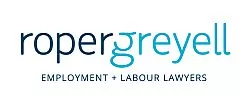The B.C. Human Rights Code was amended in mid-2016 to include "gender identity or expression" as protected grounds. As of the date this article was written, the B.C. Human Rights Tribunal has not interpreted or applied the amendment in any of its decisions.
Ontario included gender identity and expression in its human rights legislation in 2012. Two recent decisions of the Ontario Human Rights Tribunal (the "Tribunal") shed light on what is protected as gender identity and expression and give employers in British Columbia an idea of what to expect from the recent amendment to the B.C. Code.
By way of background, gender identity or expression differ from an individual's sex or sexual orientation. Gender identity refers to a person's perception of his or her own gender. Gender expression describes the way in which a person expresses his or her gender identity – typically through clothing, appearance or behaviour.
In Browne v. Sudbury Integrated Nickel Operations, 2016 HRTO 62 (Hart), the Tribunal held that the Ontario Human Rights Code does not protect the right of a cisgendered or gender conforming man1 to grow a beard. The applicant alleged that having to shave his facial hair amounted to prohibited discrimination in employment on the ground of gender expression. As part of his work, he was required to be clean shaven so he could wear a respirator mask to protect him from gas fumes. The employer had a policy requiring employees to be clean shaven because facial hair could interfere with the fit of respirator masks.
The Tribunal examined a Manitoba case, where it was held by the courts that the growing of facial hair is not protected under human rights legislation. The Tribunal explained that gender identity and expression were added to the legislation to afford human rights protection to transgendered or other gender non-conforming individuals. There was nothing to indicate that bearded men suffered social, economic, political or historical disadvantage in Canadian society. As a result, the Tribunal dismissed the complaint.
Similarly, in Barksey v. Four Corners Medical Walk In Clinic/Northwood Medical Clinics Inc., 2016 HRTO 1116 (Pickel), the Tribunal dismissed the complaint of a cisgendered man. The applicant alleged that a walk-in clinic had subjected him to prohibited discrimination when it prohibited him from being on its premises. He argued that the protected ground of gender expression included his "manly" way of expressing himself.
The Tribunal dismissed the complaint because it had no reasonable prospect of success. The applicant had been hostile to clinic staff and this was simply unrelated to gender expression. The Tribunal explained that gender expression does not protect cisgendered men against adverse or negative treatment for expressing themselves in a stereotypically male way.
Lessons for Employers
- Gender identity and expression do not protect cisgendered or gender conforming behaviour. Such behaviour may be protected by another ground under human rights legislation such as "sex".
- At least for employers in B.C. and Ontario, ensure that workplace discrimination and bullying and harassment policies incorporate the protected ground of "gender identity or expression". Consider updating other policies, e.g. a dress code policy.
- Make employees aware of workplace policies around gender identity and expression. Remind employees about the importance of tolerance and inclusiveness in the workplace and provide appropriate or necessary training and supervision.
Footnote
1A cisgendered or gender conforming man is an individual who self-identifies as male (gender) and was also born as a man (sex).
Previously printed in the LexisNexis Labour Notes Newsletter.
The content of this article is intended to provide a general guide to the subject matter. Specialist advice should be sought about your specific circumstances.

